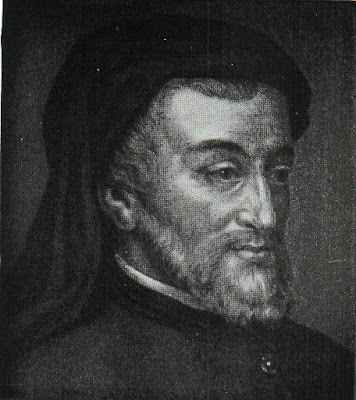It was customary in medieval England to travel with arms. The yeoman bears a gay dagger while the Miller carries a sword and a buckler by his side. Even the Reeve has with him a rusty blade. Common people's love of music is almost proverbial in that age. The Miller entertains his companions by playing the bagpipe. The Squire plays on a flute while the Friar sings to the accompaniment of a harp. The Pardoner sings---My dear love! Come here to me. Chaucer's Monk relishes a fat swan and the Summoner is fond of strong wine. All these things are typically observed in the Medieval Ages.
The Typical Medieval Figures
The Typical Medieval Figures
As a colourist, Chaucer describes contemporary dresses and manners. He throws on canvas men who belong to typical professions of the Medieval Ages. For instance, there are the Yeoman, the Merchant, the Shipman, the Doctor, the Man of Law, the Miller, and the Manciple etc. The Knight and the Squire belong to the age of chivalry and romance. True of a typical medieval monk, Chaucer's Monk, when he is cloisterless is not a fish that is waterless. The Summoner is a typical medieval officer who earns a handsome amount of money by underhand means.
Other Topics:
The Spirit of Transition
Chaucer has captured the spirit of transition in the portraits of the Knight and the Squire. The knight represents the age of chivalry; the Squire points out to the emergence of a new kind of aristocracy. Chaucer has rightly been called the Evening star of the Medieval day and the Morning star of the Renaissance. He represents both the old and the new. His poetry appeals to us even today.
AS A MODERN POET
Interest in Man's Affairs
The very first thing which makes Chaucer a modern poet is not other-worldly but hither-worldly. He records the concrete facts of life and this world. 'The modern outlook is characterized, as Compton Rickett observed, by an impatient and progressive spirit which is alien to the medieval mind.'
Modern Outlook
In the words of Cazamian, 'Chaucer has a philosophy of universal tolerance and mellow wisdom'. In The Canterbury Tales he has recorded the vice and corruption of society with a spirit of tolerance and understanding. In this way Chaucer inspires English poetry with an essentially modern outlook towards life, marked by catholicity.
First Great Humourist
One of the qualities that gives Chaucer' character their amazing life and realism is his humour. He may be regarded as the first great humorist. Humour can be used in a broad as well as in a limited sense. In a narrow sense, it means a gentle mirth. In the broader sense, it stands for boisterous humour (fun), intellectual humour (wit), and bitter humour (satire).
Chaucer's work reflects all these different types of humour.
Realism
Chaucer imparts realism to English poetry. There is a very little of realism in Medieval narrative before Chaucer. Like Pope and Tennyson, he gives us a panoramic view of his society and is rightly called the social chronicler of his age.
Compton Rickett says, 'Like Shakespeare, he makes it his business in The Canterbury Tales, to paint life as he sees it, and leaves others to draw a moral.'
Perennial Appeal of His Poetry
The Canterbury Tales have perennial freshness and appeal. Chaucer's Canterbury pilgrims may be recognized in any age. They died in 14th century but their counterparts are still living in the modern world. It is this power of exhibiting the universal in the particular which has made Chaucer not only a poet of the Middle Ages but of all times.
Image Source - Wikimedia Commons
Further Topics:
Geoffrey Chaucer: A Representative of His Age
Chaucer's Contribution in English Language and Versification
Chaucer's Satire and Irony
Image Source - Wikimedia Commons
Further Topics:
Geoffrey Chaucer: A Representative of His Age
Chaucer's Contribution in English Language and Versification
Chaucer's Satire and Irony









